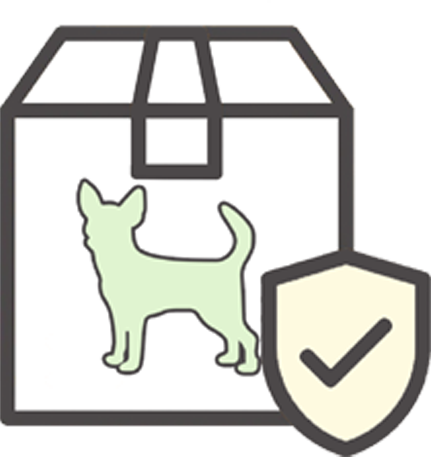Choosing the Right Vet
Friday, August 03, 2018 10:29:09 AM America/Los_Angeles
Whether you have moved or have a new furry friend in your life, now is the time to find a new veterinarian. It’s best to start your research early before you actually need a vet.
Start Asking Around
Before you dive into researching on Yelp or other review sites, utilize your personal network and go by word of mouth. Ask friends, relatives, and neighbors for recommendations. When you ask your own network, you can get information about what is important to you instead of what is important to other people on review sites. If the reason you need a new vet is because you are moving, then ask your current veterinarian if they have a recommendation for you.
Check Credentials
You can check the American Animal Hospital Association (AAHA) to see which vets near you are accredited. These vets have the higher standards of care. The AAHA checks to see standards in emergency services, pain management, radiology, dentistry, pet medical records, and more.
Schedule a Visit
If you have found a vet you like, schedule a visit and come with a list of questions you have about their practice and any questions about your pet. Some questions to include are:
· Will the office hours work with your schedule?
· How can you reach the staff?
· Do they offer emergency services?
· Do they offer grooming or boarding?
· Do they have specialists to refer you to if necessary?
· How long does it take to make an appointment?
· Are appointments required?
· Is parking convenient?
· Do they have an online system to schedule appointments and ask questions?
· Are there multiple vets on staff?
· Can you request a specific vet to work with?
· Do they offer payment plans or accept pet insurance?
· Do they offer any discounts for senior pets or multiple pets?
· Are there technicians or other staff members?
· Can you recommend any training or help with potty training?
Once you are at the facility, make sure that it looks clean, see whether the cats are dogs are separate, and note if you feel comfortable there. If you are going to ever board your dog there, do you like the facilities? Do the dogs get to go outside with fresh grass? You can see how the staff interacts with the animals and if there is too much clutter, or if the equipment looks up to date. The facility will need to be the right fit for both you and your pet, so this first visit is crucial.
Consider a Specialty
If you have a cat or dog you have more options when it comes to choosing a veterinarian, but if you have a bird you need to find a vet that will specialize in avian animals. If you have a certain cat or dog breed, you may want to find a vet that specializes in that breed. Certain breeds have more health problems than others, so it’s important that your vet can diagnose and treat them.
Red Flags at Vet Offices
You may just get a feeling that it is time to find a new veterinarian, but there are some things you should look out for. If your vet doesn’t want to enlist the help of other specialists and wants to do it all himself or herself, then that could be a problem. If a vet hasn’t been able to get a diagnosis, or the condition of the pet is getting worse, then it’s time to get another veterinarian for help. If your vet is telling you what to do instead of discussing options with you, then it’s time to find someone who will involve you in the decisions. If they start sentences with “you need to” or “you have to,” you may want to move on. Your vet should be complying with current standards. For example, vaccines don’t need to be administered every year and vets that are doing this may be wanting to collect payment for unnecessary procedures. If your vet has made an error, you will need to determine if staying is the best course of action for your pet. Mistakes can happen, and if you have received a reasonable explanation it’s up to you to decide if you are comfortable. Anything else that makes you uncomfortable can be a red flag. A vet’s office shouldn’t smell like they haven’t changed out potty pads in a month.
Preparing a Dog for a Visit
Once you have chosen a vet, you will need to prepare your dog for a visit. Sometimes even a routine visit can be a little traumatic for dogs, but it is necessary. Your dog may have a fear of the vet because they aren’t used to being around new people, so socializing early on in life is important. Whenever possible, make sure to introduce your dog to new people and situations. Establishing that the vet is not a scary place early on will make any future visits easier. If your dog already has a fear of the vet due to prior experience, then getting him used to being touched will be helpful. You can do this by touching the ears, feet, and mouth when the dog is already in a relaxed state. If the dog is acting aggressively, use training methods in order to correct and then repeat. Reward once you get a positive result. This may also be a stressful time for you, and your dog’s behavior can be affected by your behavior, so it’s important to stay clam. If you are at ease, your dog is likely to be the same way.
Get your dog to use the dog bathroom before going to the vet and exercise them before going. There may be different dog grass than your pet is used to, and he may have trouble relieving.

